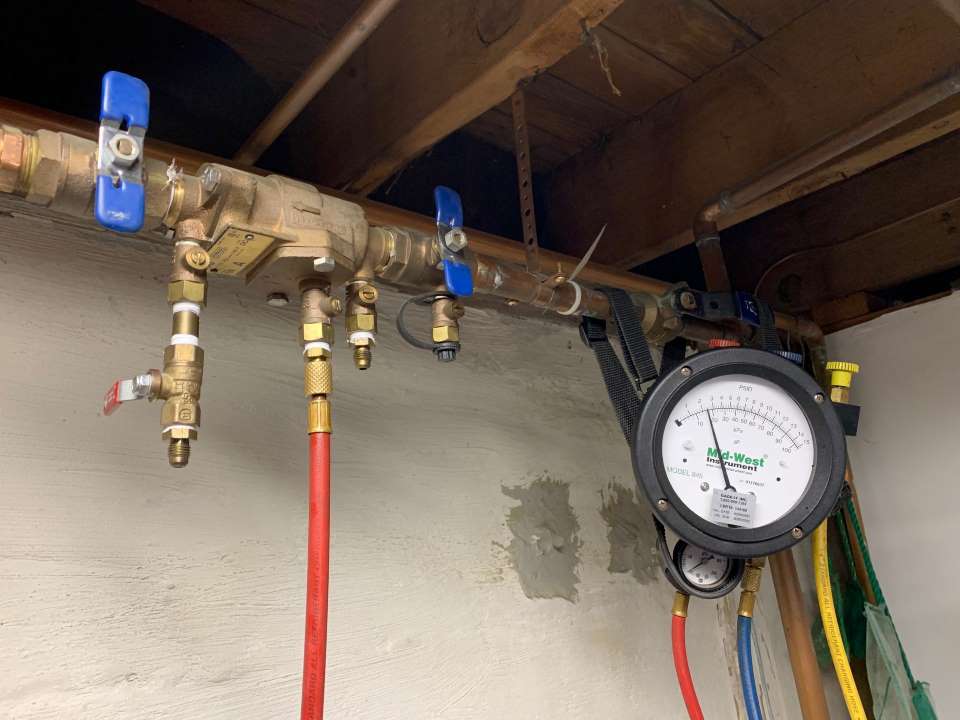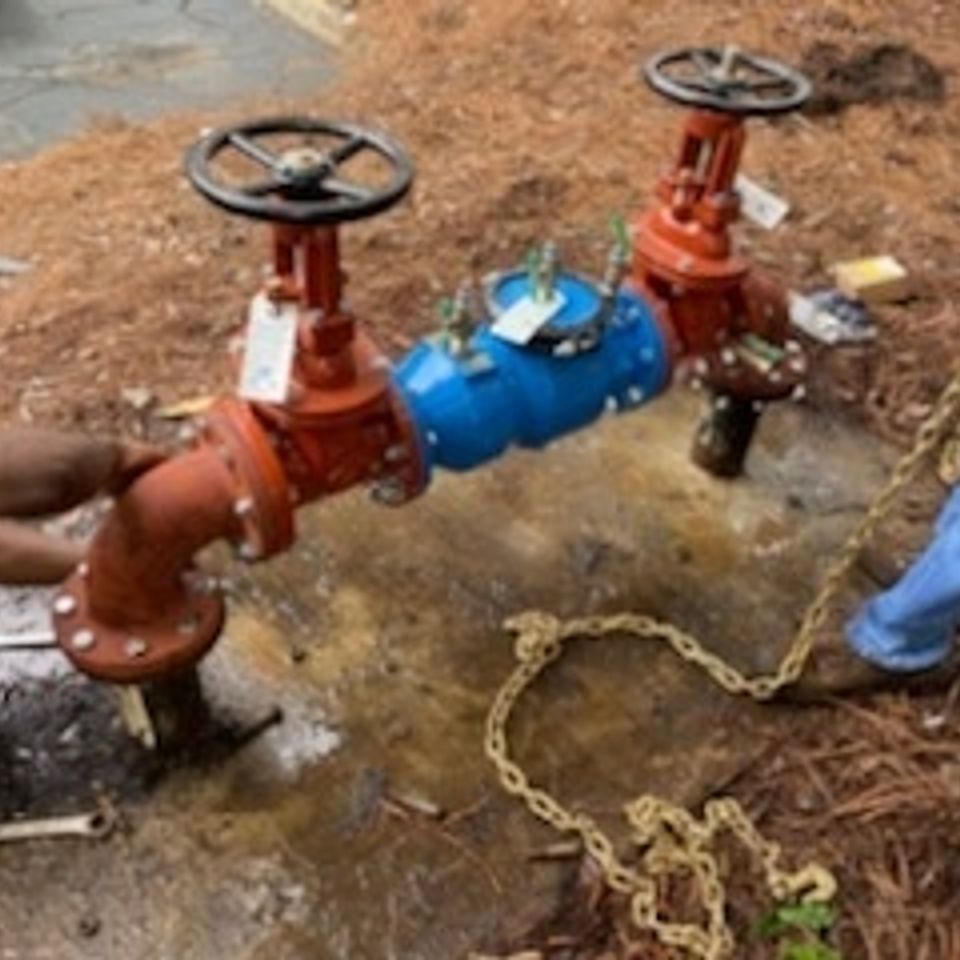Should I Check for Backflow in My Water
Should I Check for Backflow in My Water
Blog Article
What're your opinions about Backflow Prevention?

Yes, you need to backflow test your house's water supply to ensure that the water is devoid of contaminants as well as damaging levels of chemicals. As a result of the devices needed and also space for error, you must not try to perform heartburn testing by yourself. We recommend that you call a specialist plumber every couple of years to evaluate your water.
Heartburn Can Impact Both You as well as Your City
Because dangerous heartburn can influence the public water supply in enhancement to a solitary structure, several cities develop heartburn standards. Modern-day cities have backflow devices in area that secure the water supply that comes from many residences and also industrial homes. The real danger comes from irrigation systems, which can harm the water with hazardous fertilizers, manure, as well as other chemicals.
What Creates Backflow?
A typical source of backflow is a loss of water stress that triggers the water to siphon back right into the supply of water. An instance is clearing out a paint container making use of a hose pipe. You load the paint container up with water, leaving the tube in the pail. After some time, there is a loss in water stress and the hose pipe starts to suck the water back right into the supply of water. As you can think of, there are currently chemicals from the paint that are going into the water supply, possibly posing a threat. Numerous individuals are not even mindful of backflow screening, however there are many reasons why it's so vital.
Backflow Screening is Required by Legislation in Specific Cities
Depending upon where you live, you may in fact be called for by regulation to backflow examination your regulation. As an example, Iowa City maintains a document of all buildings served by the city's supply of water. The city needs that specific "high-hazard" centers undertake heartburn screening. In many cases, residential properties such as homes and apartment are influenced.
You Can Avoid Heartburn
Unsafe backflow is easily avoidable if you have a specialist plumber install a heartburn device. The plumber will likewise test for backflow and also establish if there is an active danger. The major function of a heartburn tool is to stop water from flowing backwards right into your water supply. Plumbing technicians mount the tool on the pipelines in your house to guarantee that the water just streams in the proper direction.
What is Backflow?
Simply put, heartburn is when water moves upwards-- the contrary direction in the plumbing system. This is also known as "backpressure." When the water moves in this direction, it can combine with unsafe contaminants and also posture a threat.
Call a Plumber to Check for Heartburn Prior To It is Far too late
While it may sound grim, infected water can bring about horrible microbial as well as viral infections that are difficult to deal with. If there are any kind of unsafe chemical levels, a plumbing company can rapidly check your residence's water to establish. If you can stay clear of the anguish that comes from consuming alcohol polluted water, the little investment is. And if you do discover that your water has high levels of toxins, a plumber can conveniently mount a backflow prevention tool.
Yes, you need to backflow test your home's water supply to guarantee that the water is totally free of toxic substances as well as dangerous degrees of chemicals. Numerous cities establish heartburn guidelines because dangerous backflow can influence the public water supply in enhancement to a single building. A typical reason of heartburn is a loss of water pressure that triggers the water to siphon back into the water supply. After some time, there is a loss in water stress as well as the hose starts to draw the water back into the water supply. The primary purpose of a backflow device is to protect against water from flowing in reverse into your water supply.
WHY DOES BACKFLOW TESTING NEED TO BE DONE EVERY YEAR
What Is Backflow?
Toxic gas backing up into a building is one example of potential backflow issues, but backflow can occur in many other ways.
Backflow is generally referred to as the reversal of a liquid or gas in a plumbing system.
Most issues for the public occur with backflow resulting in contaminated drinking water. If you look up backflow issues online you’ll probably find references to “potable” water. That means drinking water.
There have been backflow issues in the past with drinking water. Chemicals, sewage and other contaminants have found their way into drinking water causing health issues for those that count on the fresh water.
What Causes Backflow?
In a residence or commercial building water generally flows one way. This normal flow is usually driven by consistent pressure in the water and waste system.
Anything that changes the normal pressure in the system can lead to backflow.
Fire hydrant use or malfunction can reverse the normal pressure in the system on a city line, but backflow can occur in a number of different ways.
Sometimes backpressure might be caused by someone using a garden hose and submerging the end of the hose in a pool of liquid. If pressure is lost the flow could reverse and contaminants could be released into the drinking water.
Anytime there is a connection between contaminants and the drinking water there is potential for a backflow issue. Sometimes these connections are not immediately obvious like the garden hose connecting to a building’s drinking water supply.
Backflow Regulations
The Environmental Protection Agency (EPA) provides guidelines and regulations for state and local governments regarding backflow. State and local governments also have their own guidelines and regulations for backflow prevention.
Arizona has its own backflow regulations.
Due to issues with backflow in the past, regulations require backflow preventer devices to be used in nearly all residential and commercial buildings.
A backflow preventer is a device that prevents backflow as cross-connection points where potential backflow issues may occur.
While backflow is not a common occurrence, preventers are in place to make sure there is no contamination should something malfunction or go wrong with a building’s water supply.

Hopefully you enjoyed our piece on Backflow Prevention. Many thanks for spending some time to read our post. Make sure you set aside a second to promote this post if you liked it. We enjoy reading our article about Backflow Prevention.
Tailored emergency solutions; call now. Report this page